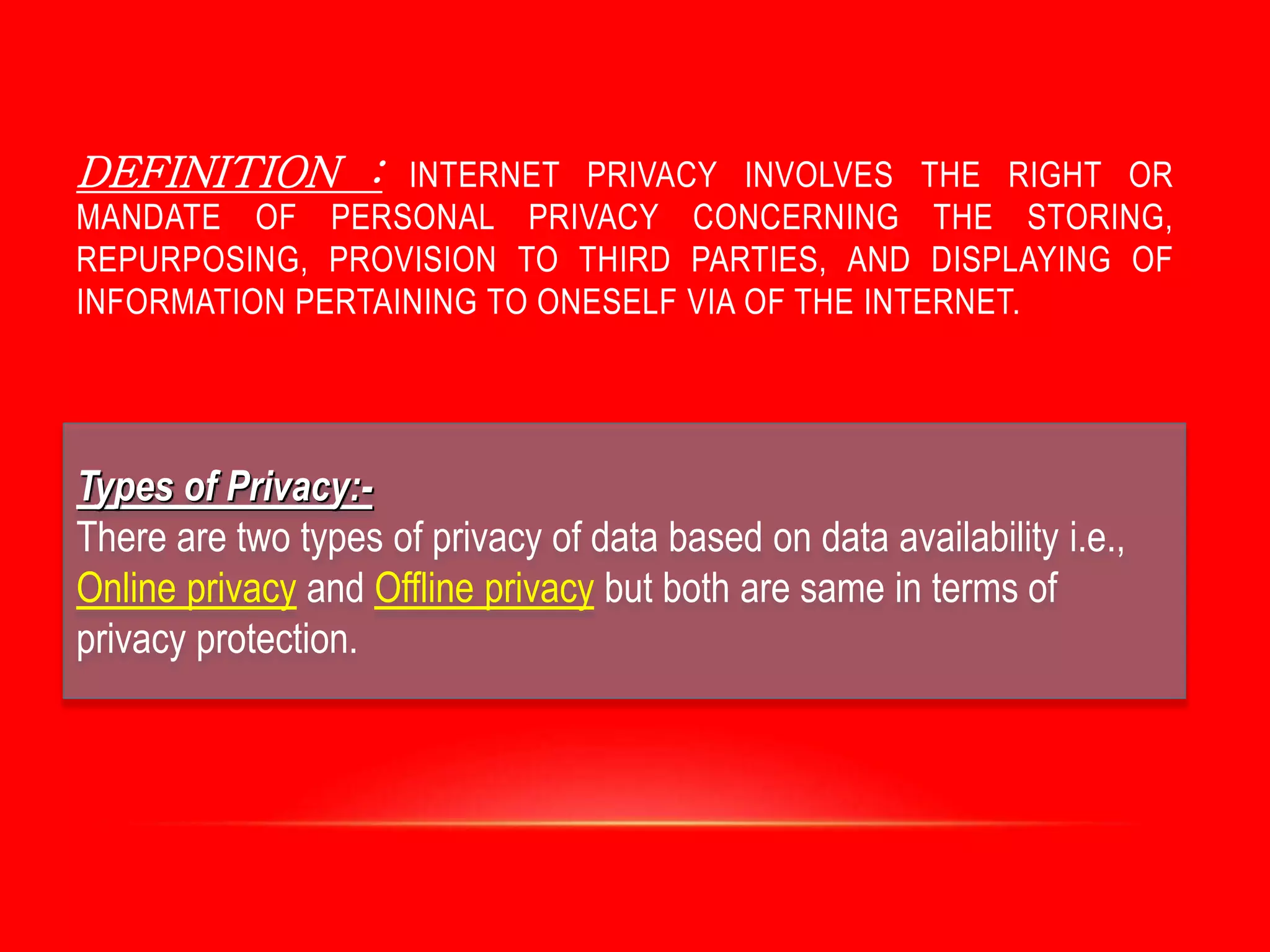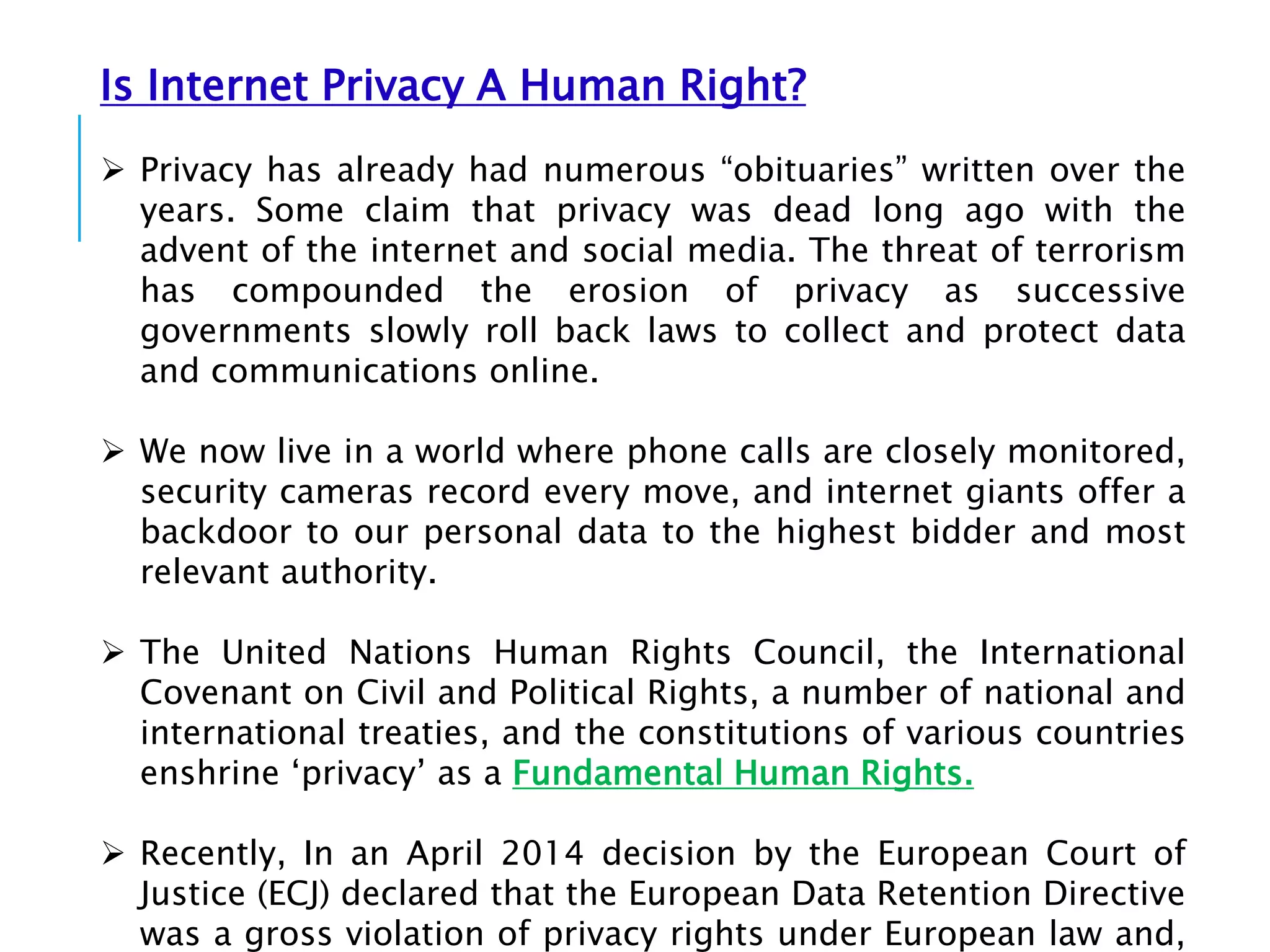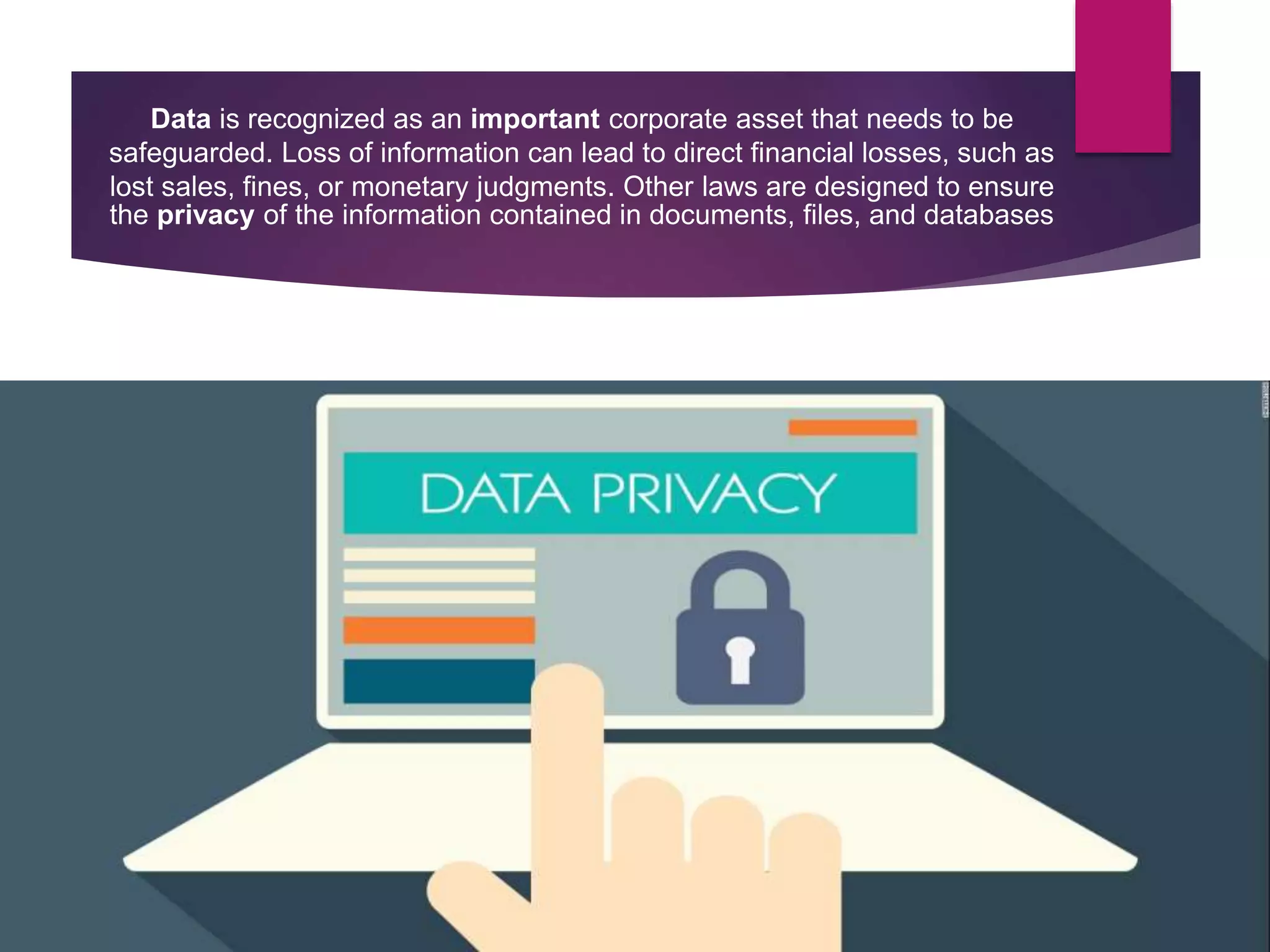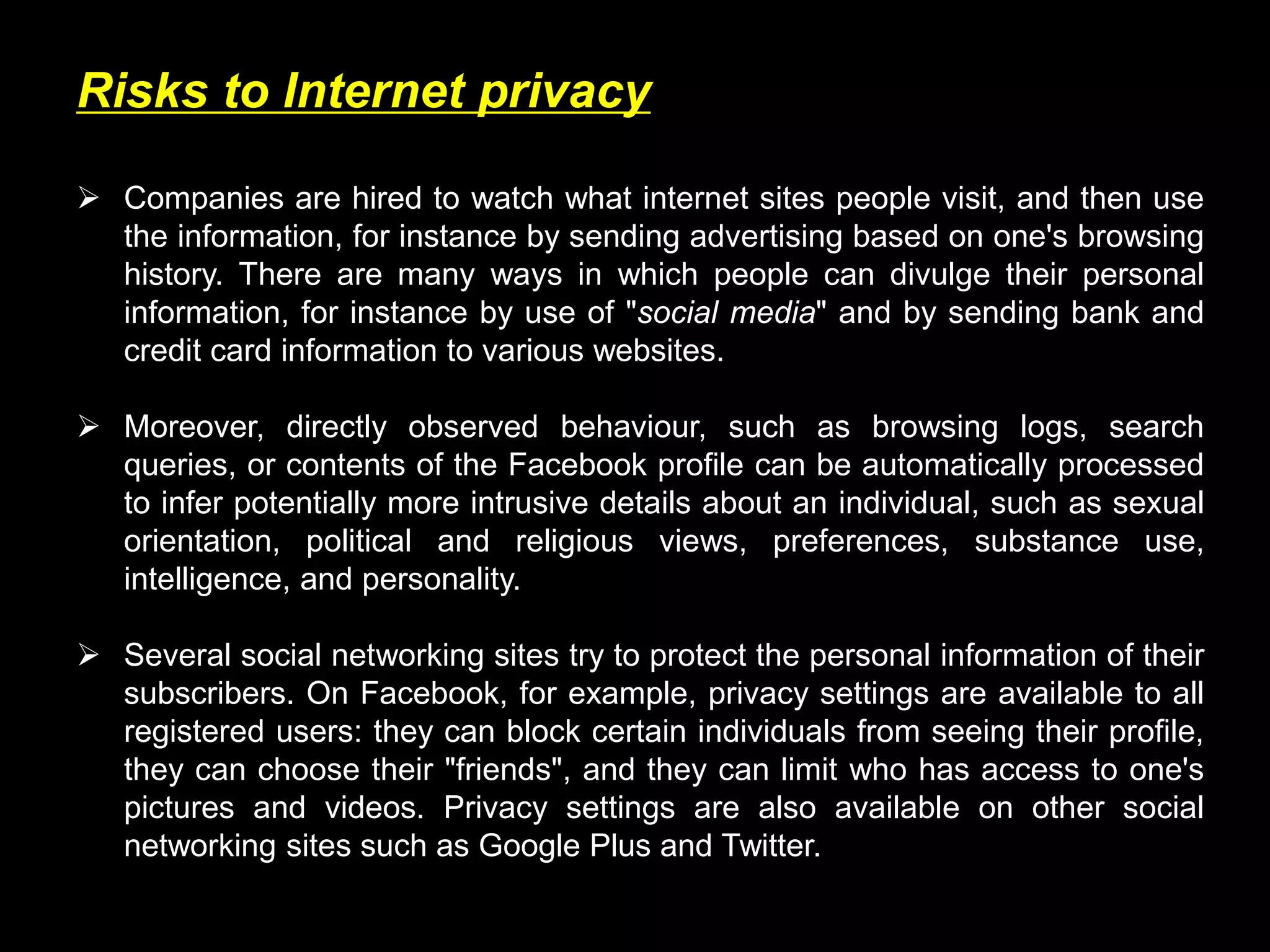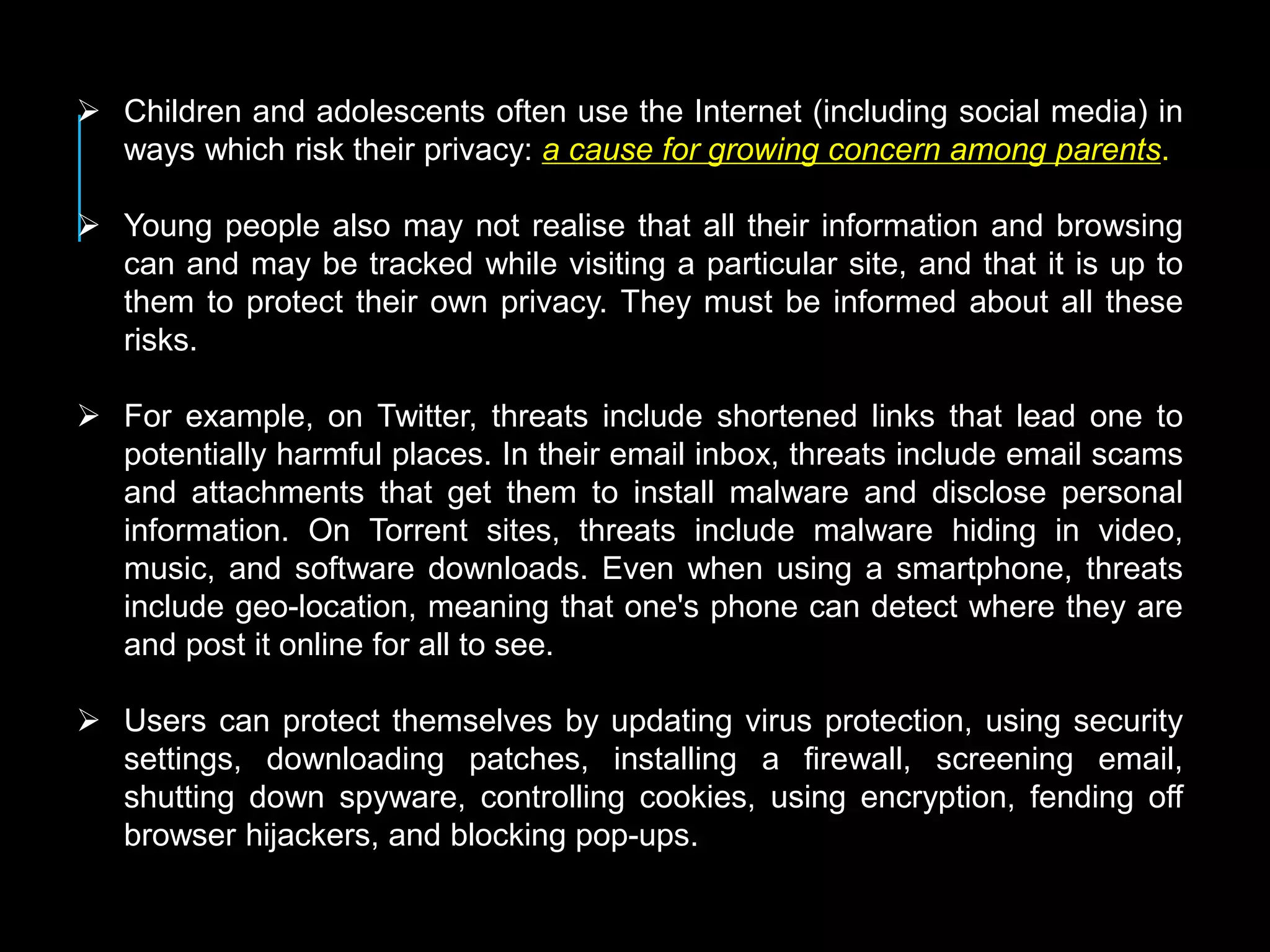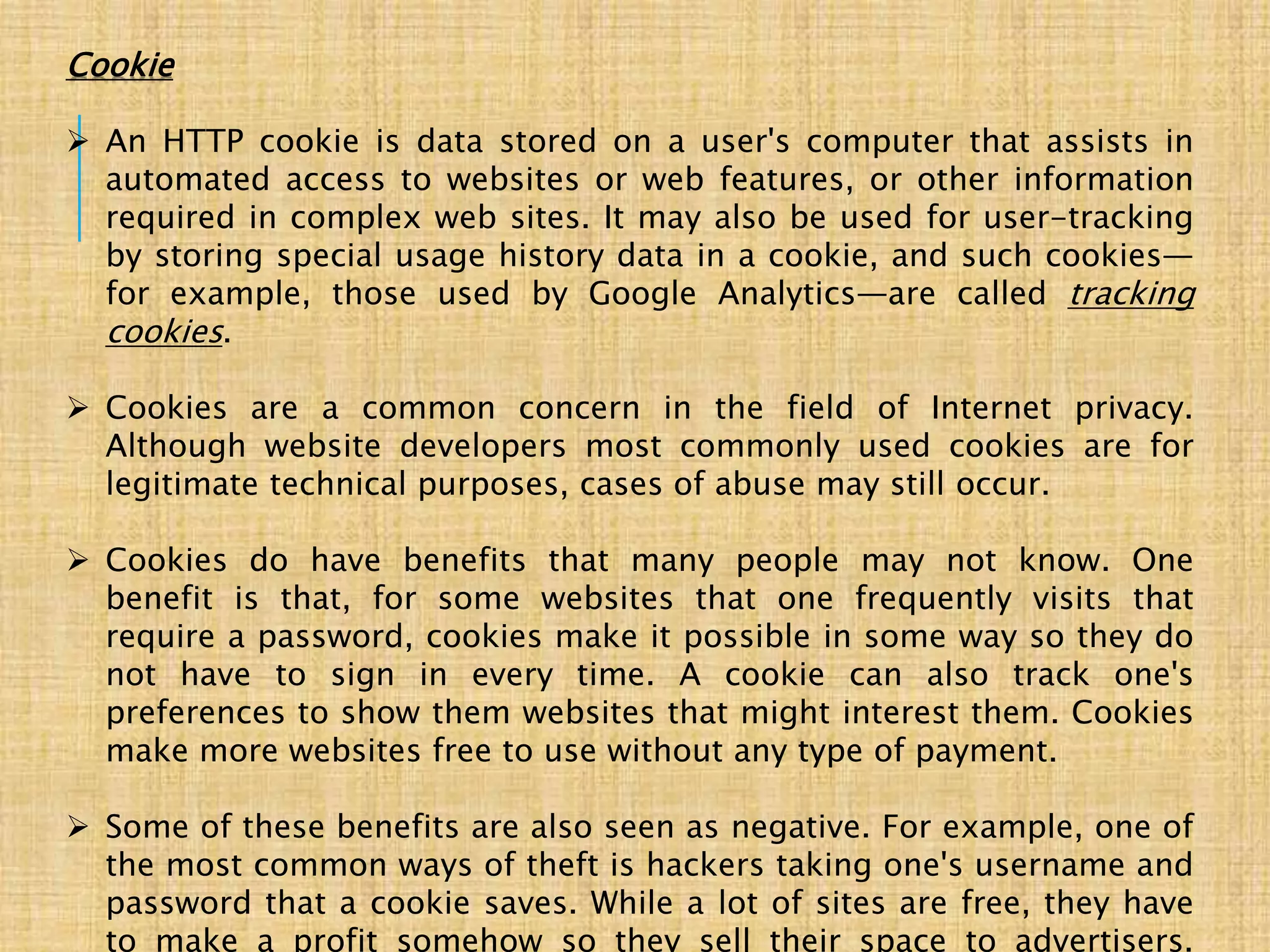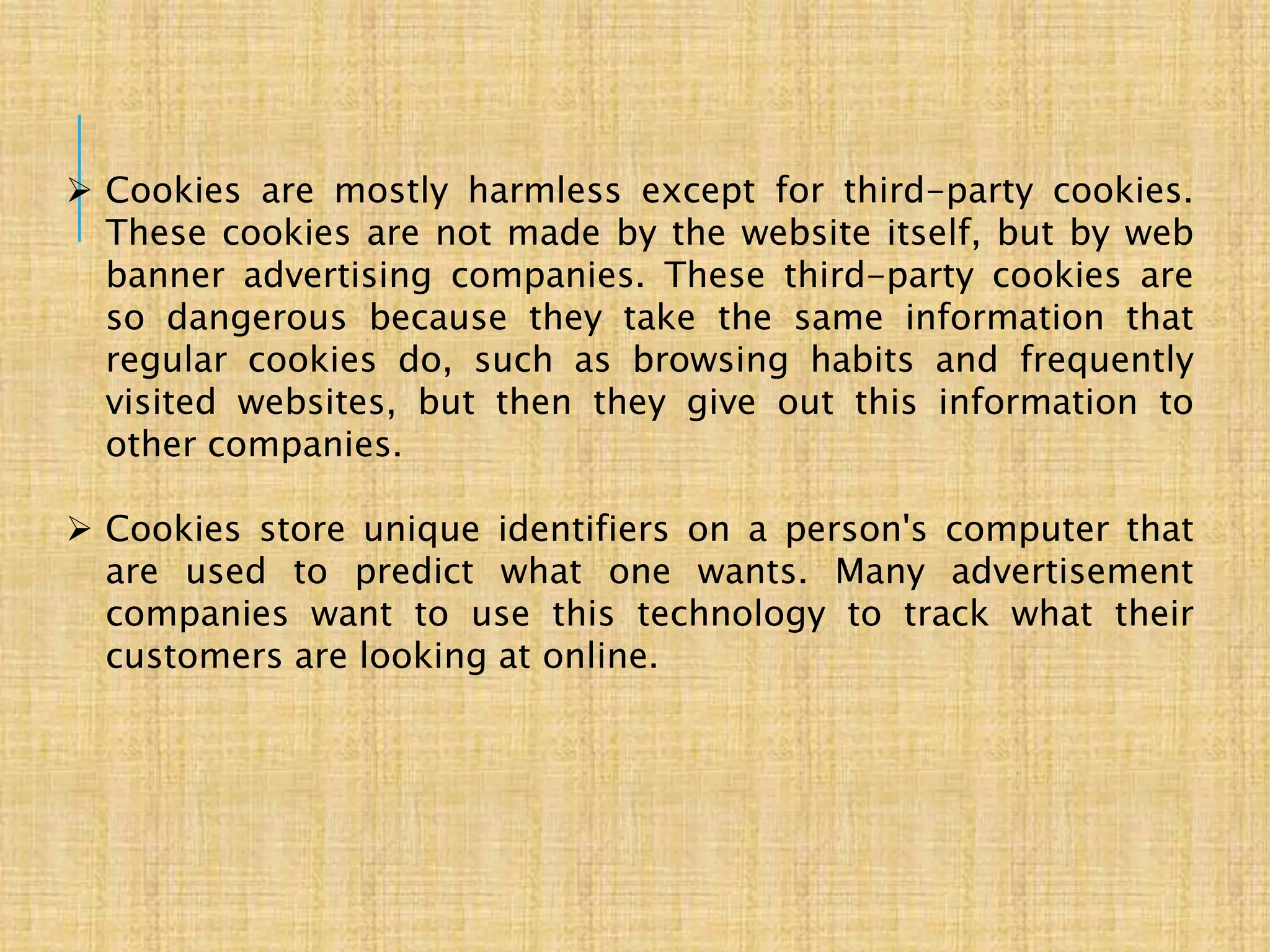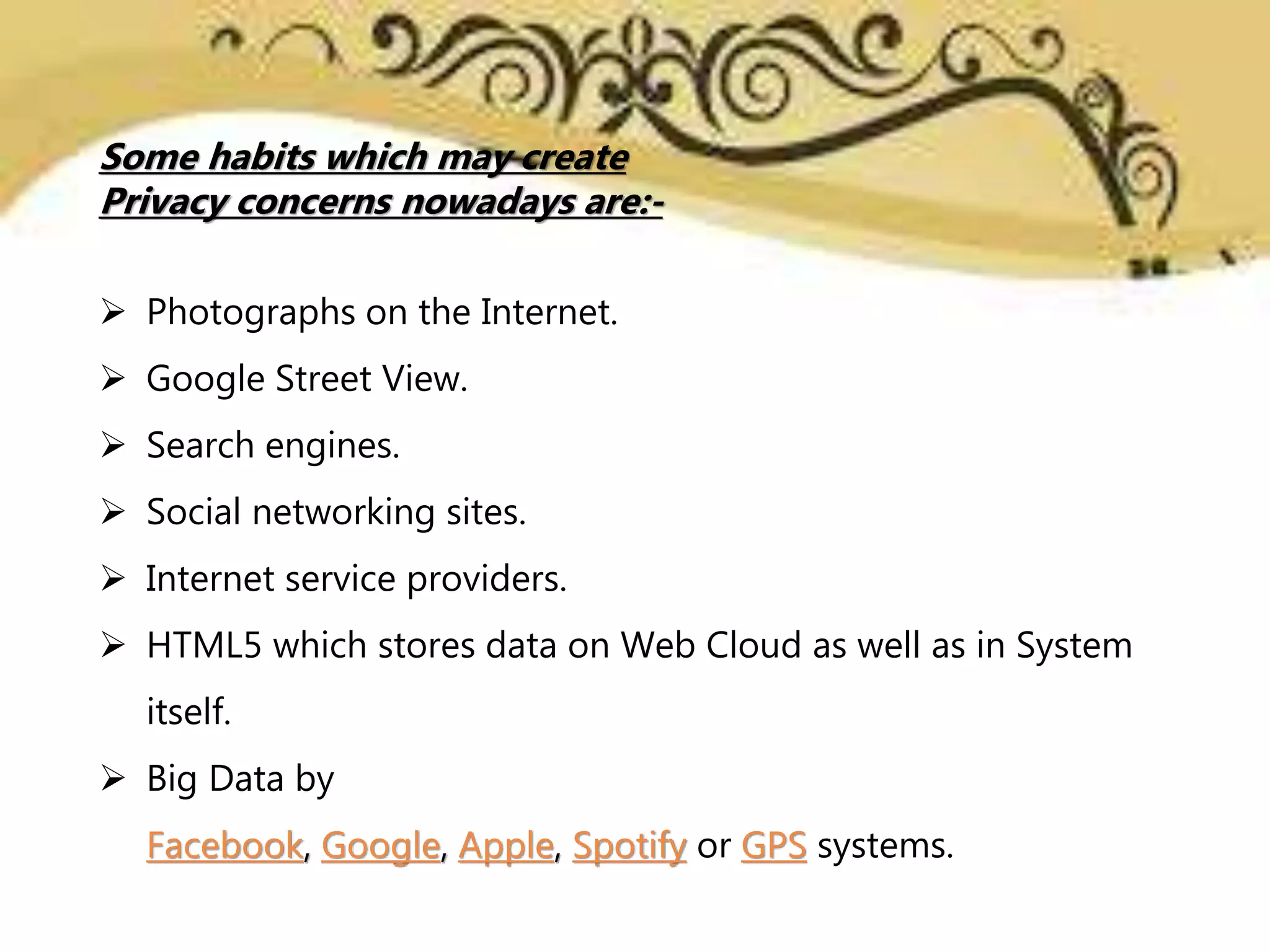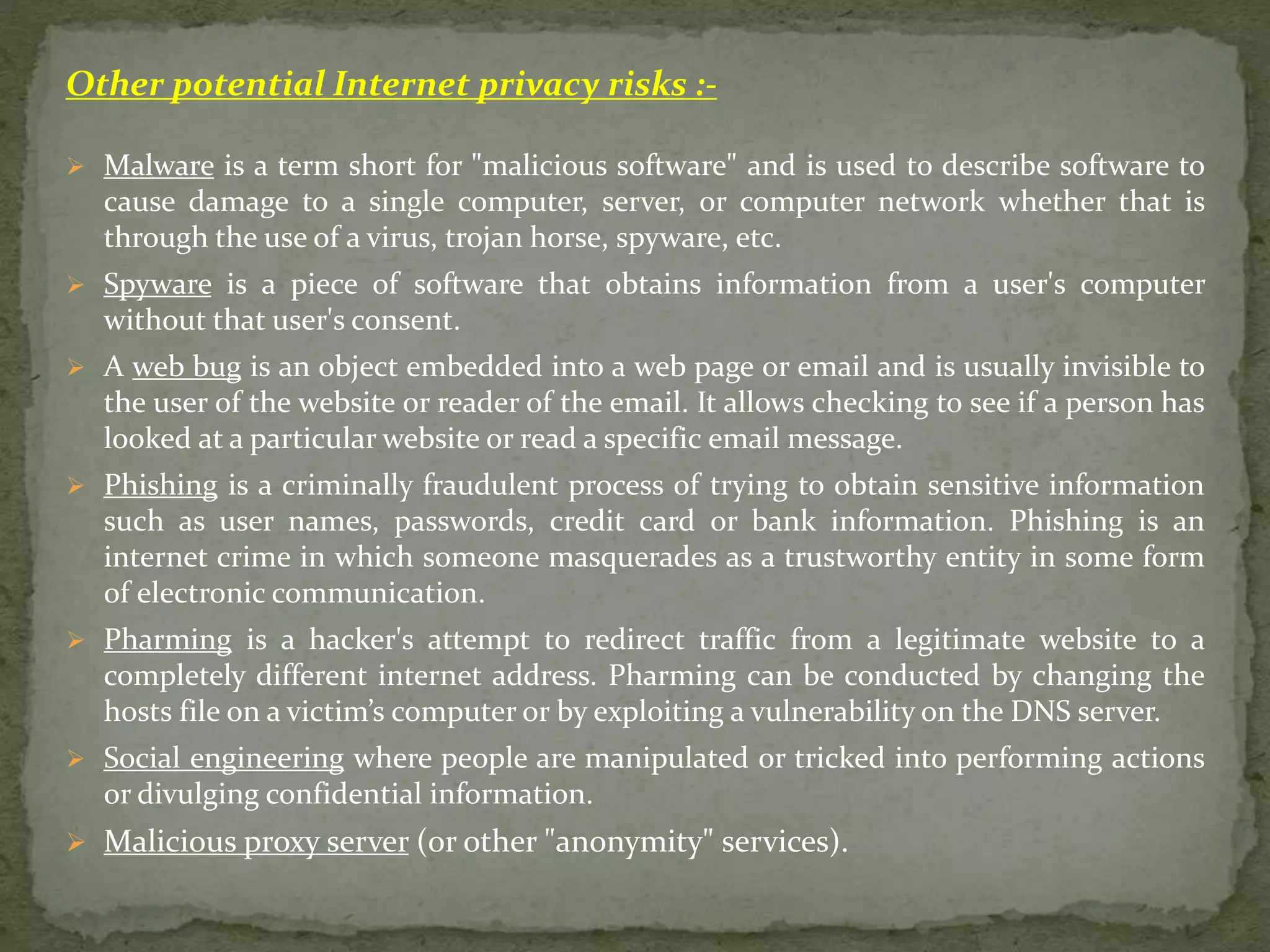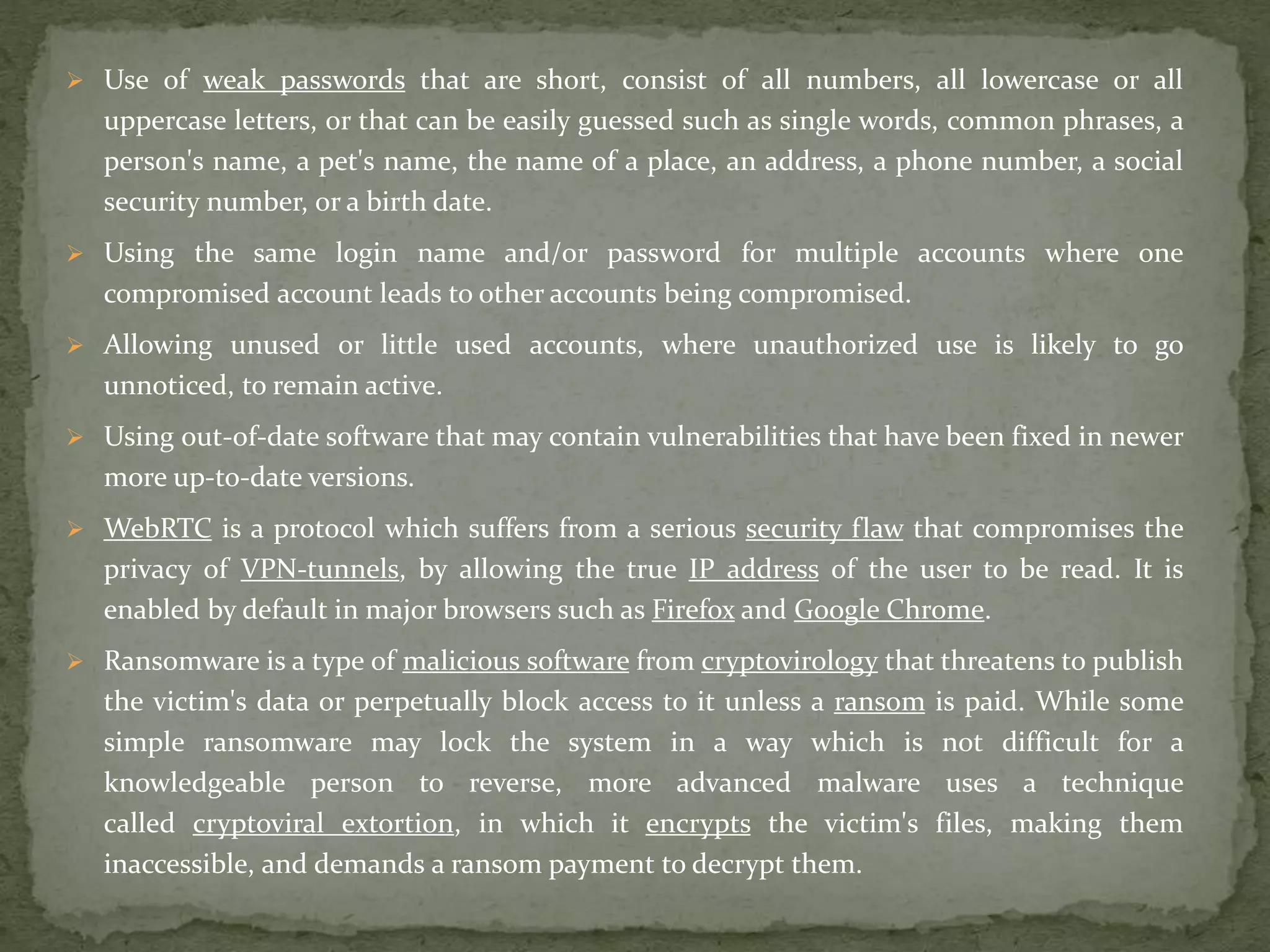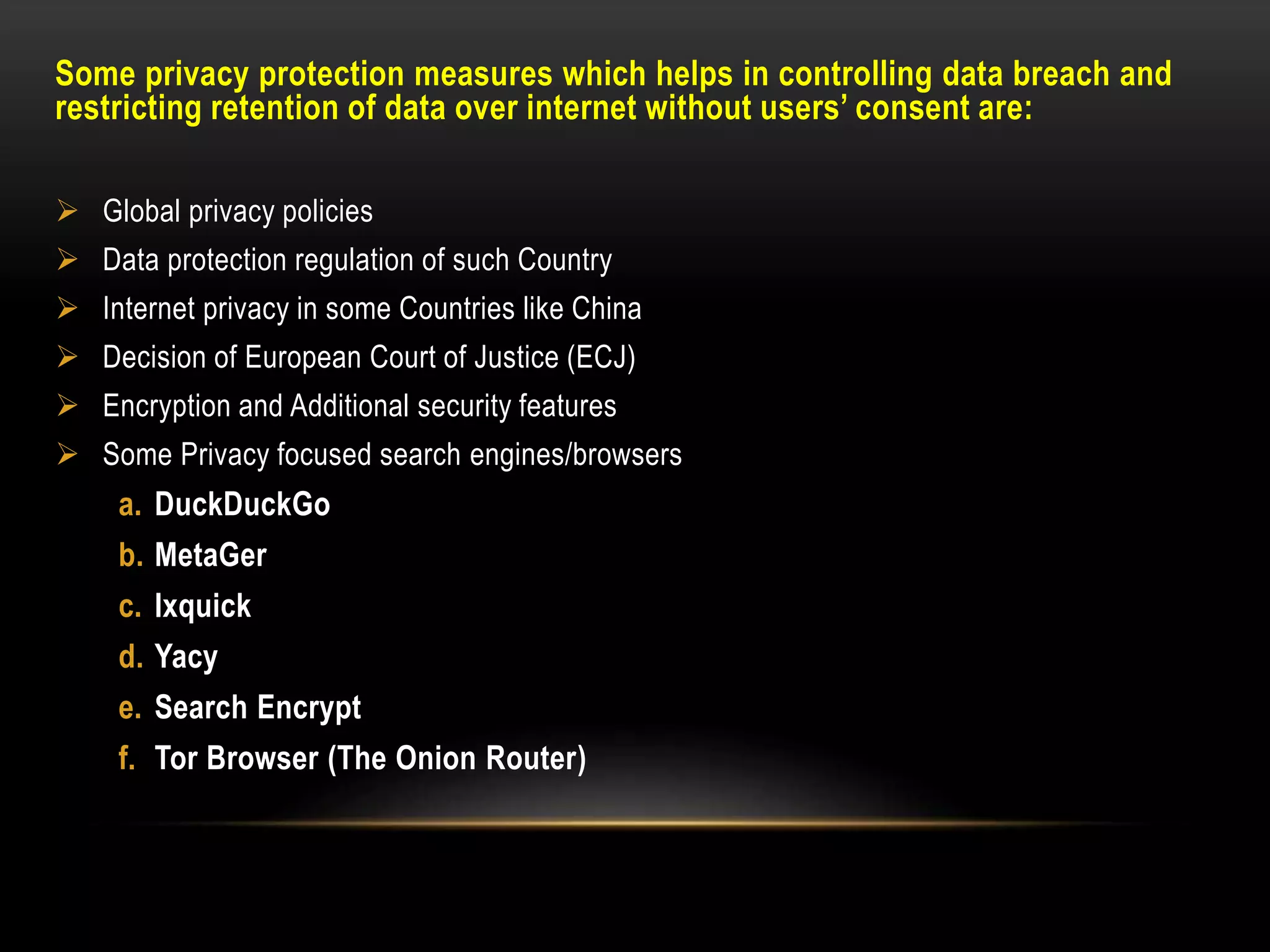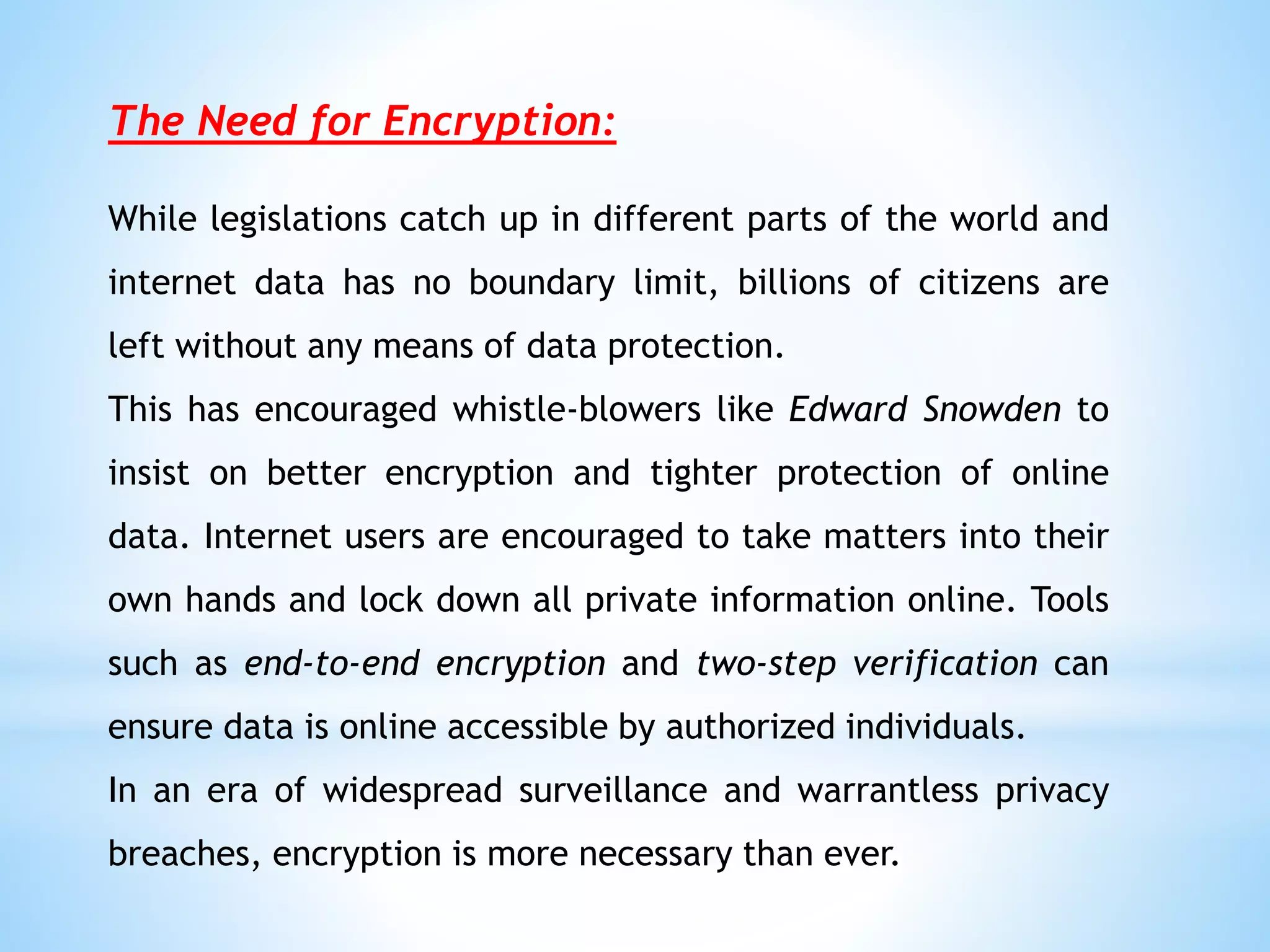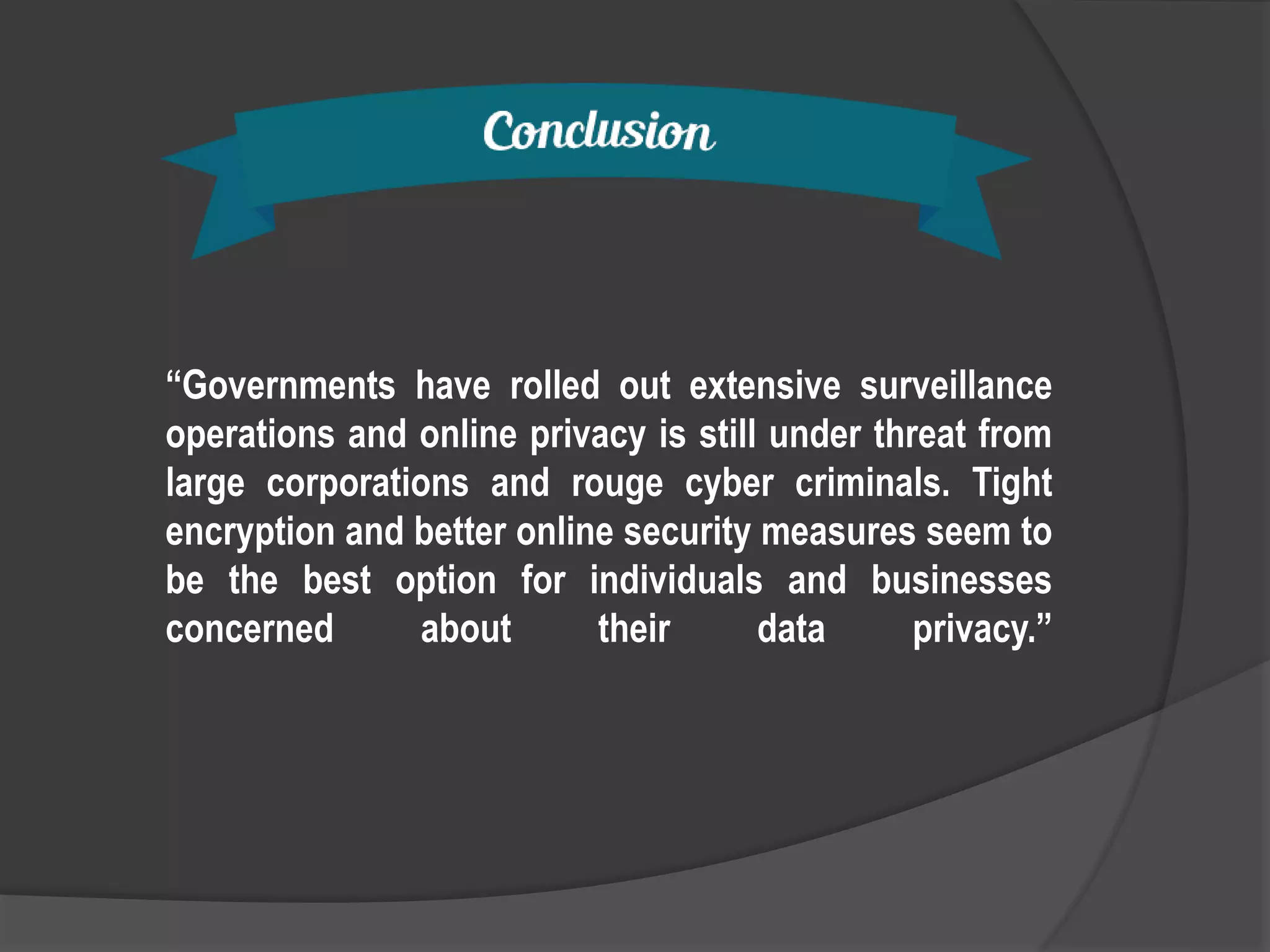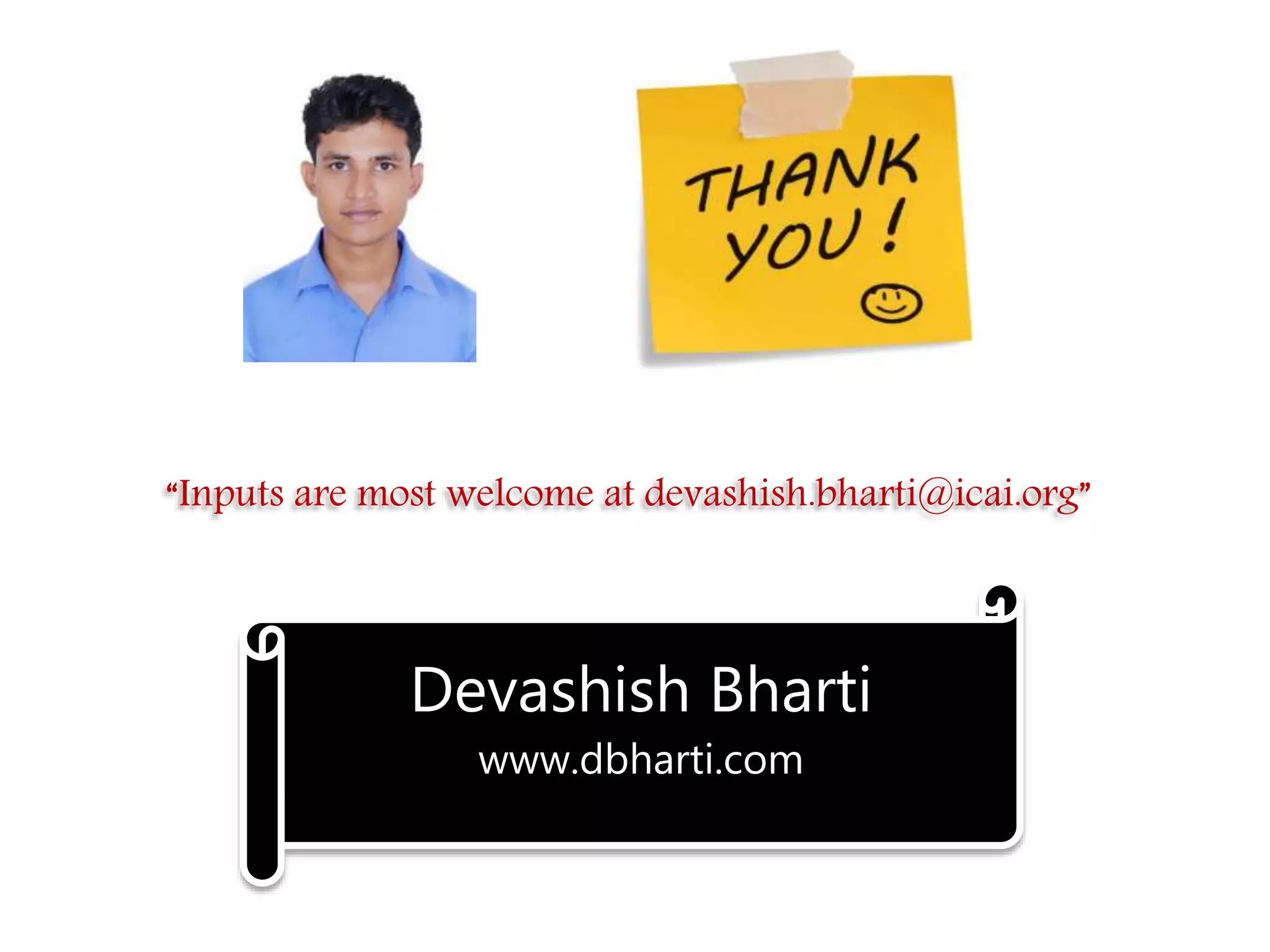The document discusses internet privacy and data protection. It defines internet privacy as the right to privacy regarding personal information stored and shared online. It notes that privacy is recognized as a human right by various international organizations and treaties. However, privacy faces numerous risks online like companies tracking browsing histories and social media sites sharing data. Strong encryption and privacy laws are important to protect individuals' information and uphold their right to privacy on the internet.

